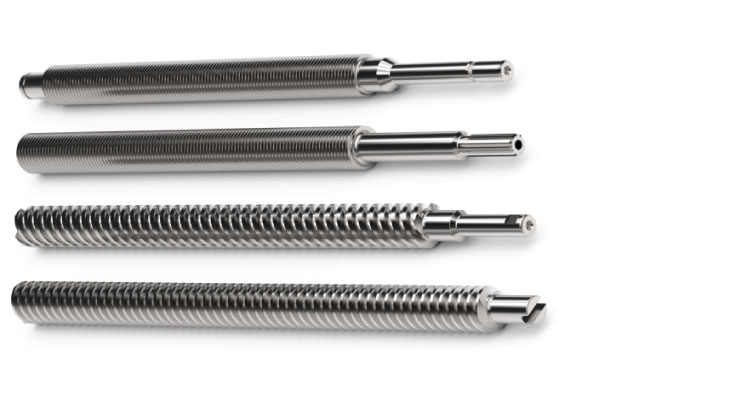How To Know Which Lead Screw Pitch and Lead is Best

What Is Lead Screw Pitch?
The pitch of a lead screw is simply the distance (spacing) between adjacent threads. Many standard thread designations express this as TPI or Threads Per Inch. Threads per inch are the reciprocal of the pitch. For example, in a ½-10 thread, the number of threads per inch is 10. The lead screw pitch is 1/10 or .100".
What Is Lead In A Lead Screw?
It is difficult to talk about lead screw pitch without also mentioning lead. Lead is the advancement a nut will make per one revolution of the lead screw. For stepper motor actuators, this also dictates the resolution. Driving the lead screw with a standard 1.8-degree stepper motor, full stepping, 200 steps per revolution, the resolution is .100" divided by 200 or .0005" per step. The lead should supersede the discussion about pitch, and although pitch and lead are often used synonymously, they can be very different numbers.
Calculating Lead In A Lead Screw
Formula for Lead
Lead = Pitch x Number of Starts
For a single start, lead screw, pitch, and lead are the same, but the above formula should be used for a thread with two or more starts.
Thread Starts
The number of starts refers to the number of threads that are wrapped around the axis of the lead screw. Each thread has its own starting point and is visible by looking at the end of the shaft. When a lead screw has more than one start, it is referred to as a multi-start lead screw.
The number of starts begins to vary with modified acme and high lead angle threads (>20 degrees). For instance, you can get a ½" diameter x .500" lead, with both 4 starts (.125" pitch, 8 TPI) and 5 starts (.100" pitch, 10 TPI). Also, a ¼" diameter x 1.000" lead, with both 8 starts (.125" pitch, 8 TPI) and 10 starts (.100" pitch, 10 TPI).
Lead screws, especially precision-rolled lead screws, can have leads where the advancement per revolution is 1" and can be as high as 3" per revolution depending on the diameter. When using long leads, the nut travels faster on the lead screw. For the nut to travel 2" per second on a ½-10 lead screw, the RPMs would need to be 1200 (10 revolutions per inch x 2" per sec. x 60 seconds per minute). With a 2-start thread, at five revolutions per inch, the RPMs drop to 600. A 5-start thread would drop the speed to 120 RPMs. The lead screw pitch and TPI are the same for all these options, but the results are different due to the number of starts used.
While lead can determine the performance and resolution, lead screw pitch is influenced by manufacturing and design considerations. Much of the decision regarding the number of starts is related to manufacturability, especially as it relates to thread rolling and its material displacement during the cold forming process. Adding starts helps facilitate the rolling process and creates better accuracy and surface finish.
In addition to the manufacturing aspect, there are some design considerations related to the lead screw pitch. For a given diameter and lead, adding starts increases the threads per inch over a fixed distance. More threads increase the minor diameter and pitch diameter of the lead screw. A larger minor diameter allows the ends to be machined to a larger diameter for bearing journals. A larger pitch diameter increases the shaft stiffness and critical speed.
More threads per inch can also help in cases where the nut length is short and the lead is long. A lead screw with a .500" lead as a one-start thread would only contain one thread in the nut. As a 5-start lead screw, that same .500" lead provides five threads in the same nut. More threads in the nut increase the load rating and lower the PSI on the threads.
The lead screw pitch and number of starts are generally pre-determined by the manufacturer's thread form design. Engineered Thread Forms (ETF) can be custom designed to fit many different applications. Our engineering department can help you determine the ideal lead, lead thread form, and number of starts to ensure success in your specific linear motion project.
If you found the information in this blog helpful, you may be interested in our Lead Screw Guide! Download your Lead Screw Guide by clicking below!



